Baking and Dreaming in the Pandemic
Lessons from creating an ethical food business: self-employment and accessibility, creative repurposing, and DIY community care
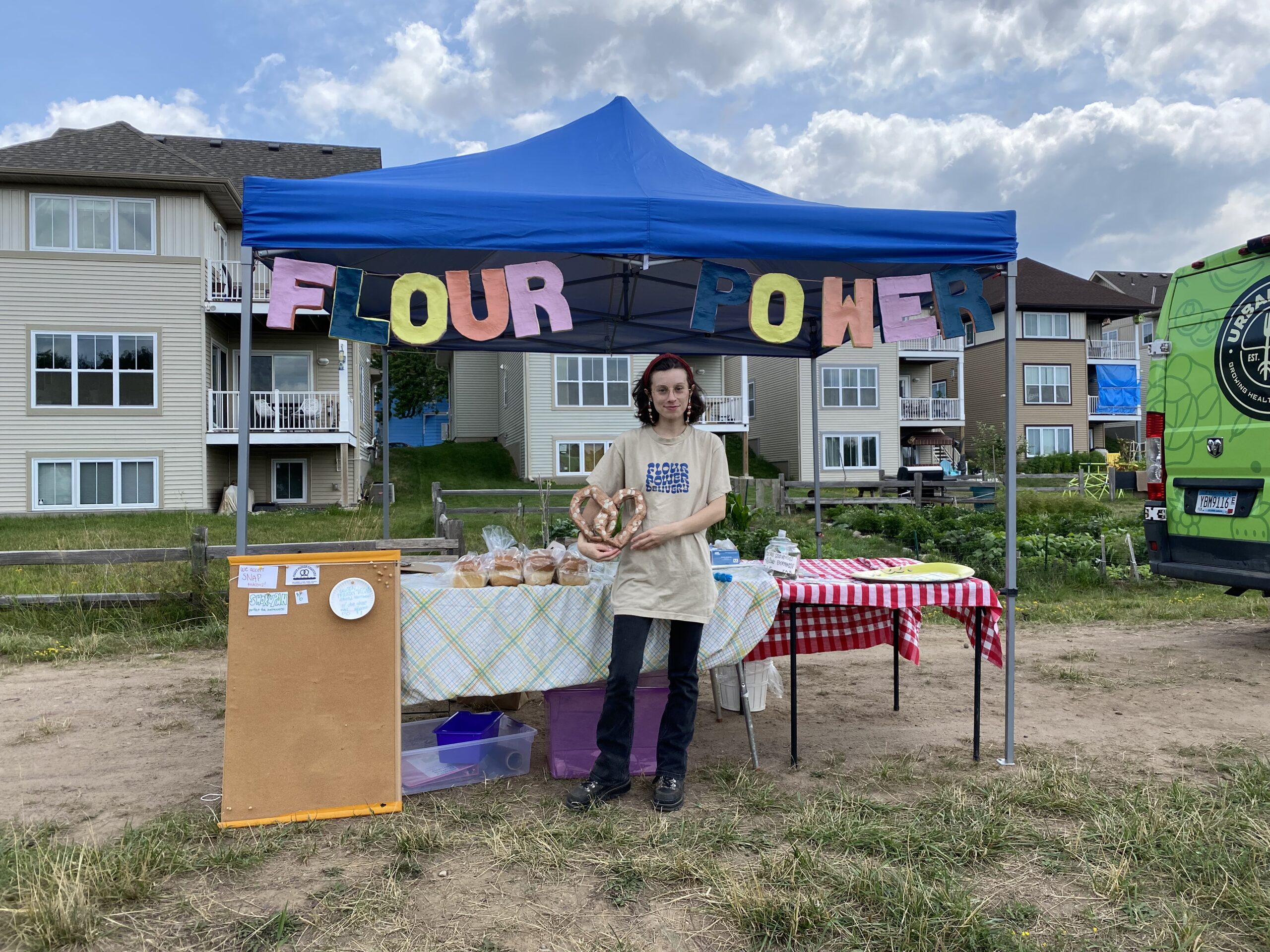
There has been so much loss during the pandemic. I still feel so deep in that loss. I am processing, hurting, and not ready to write about that bit.
I am ready to write about all the ways that people—especially disabled, chronically ill, and mentally ill people—figured out how to make some days a little bit easier for each other, even the days we tried and missed the mark. So, here is an incredibly incomplete retrospective, since about March 2020, of us showing up for each other, as documented by me—low spoons, brain fog, exhaustion and all.
In mid-March, my school went online during the last semester of my undergrad degree. Around this same time, my partner and I had to quit our jobs in order to fully quarantine. It was near the end of March when my cousin texted me. She wanted to know if I would be interested in a whole bunch of food (like, a LOT of food, seriously) from a hotel kitchen that had to abruptly stop doing service due to the pandemic. Thinking that she knew me well, I picked up the food. There were four pillow-sized bags of brussels sprouts, about 50 parsnips, a literal (for real) ton of rutabaga, and some other bonus veggies. Admittedly, when we picked all the produce up, my partner Malakai had to explain to me what more than a few of the veggies were.
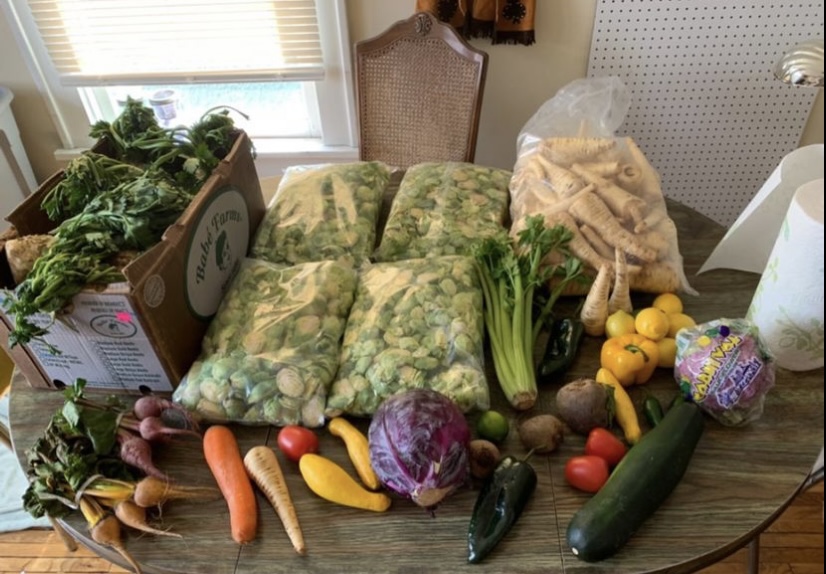
We worked together to make a menu for three free meals and sides that we would make over the course of two days.
We tried to include the smallest amount of Big 8 food allergy ingredients possible, and exclude anything not halal. I definitely got some things wrong, though-–it was this menu that taught me that soy sauce is NOT always gluten free. We made our own veggie stock and bread, and cooked everything up together.
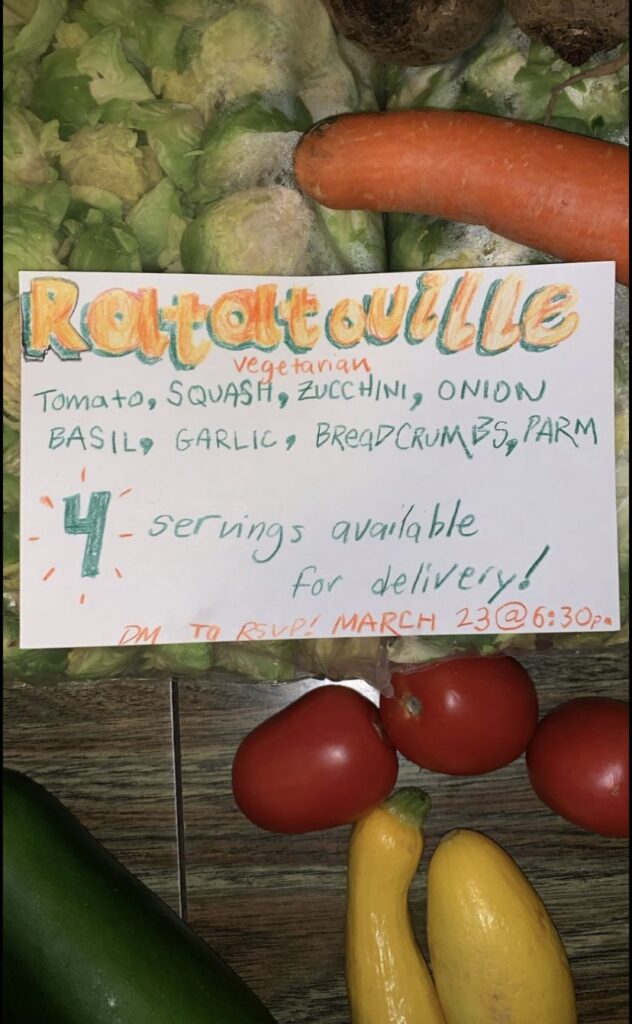
Hannah Hendrix, Ratatouille, 2020. Photo: Hannah Hendrix. 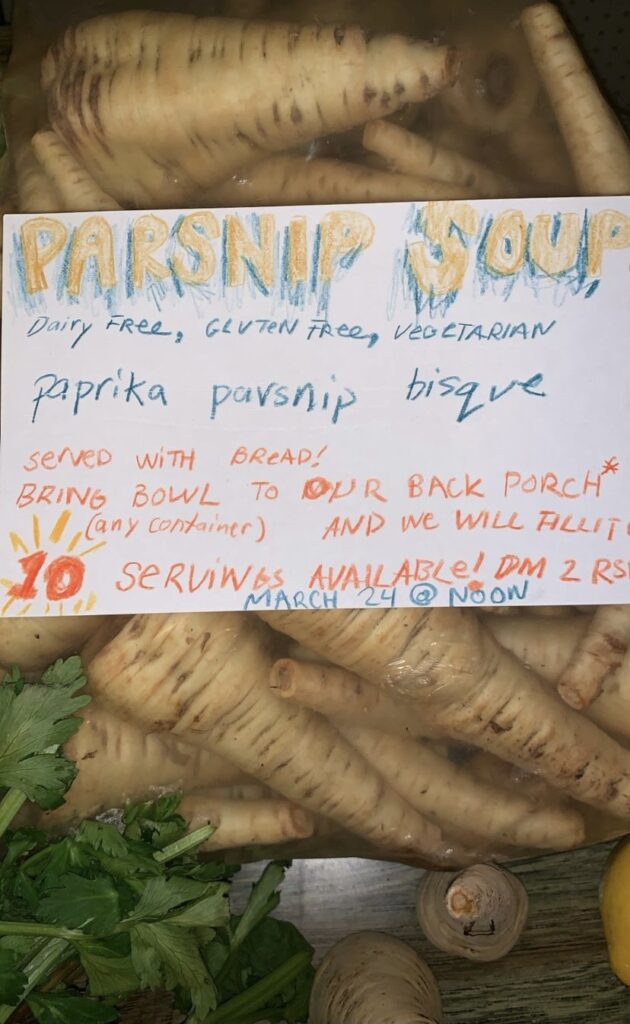
Hannah Hendrix, Parsnip Soup, 2020. Photo: Hannah Hendrix. 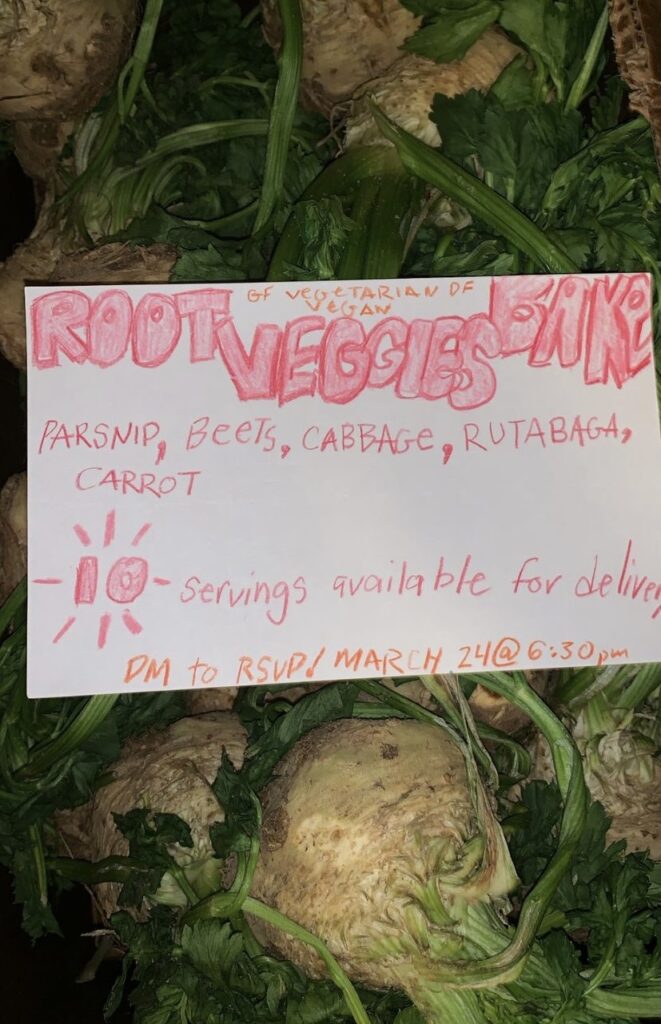
Hannah Hendrix, Root Veggies Bake, 2020. Photo: Hannah Hendrix. 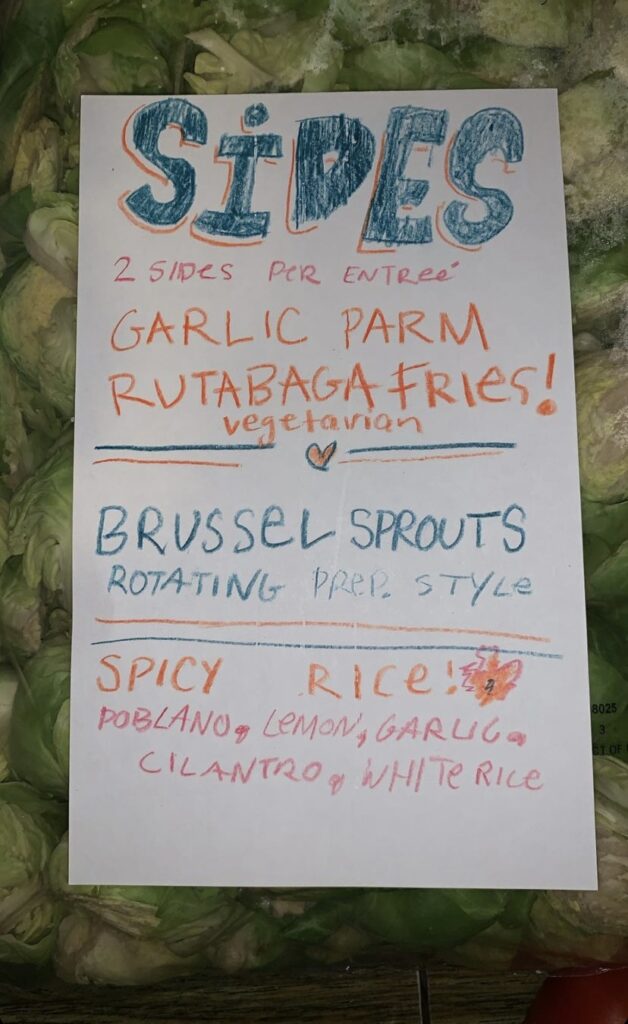
Hannah Hendrix, Sides, 2020. Photo: Hannah Hendrix. 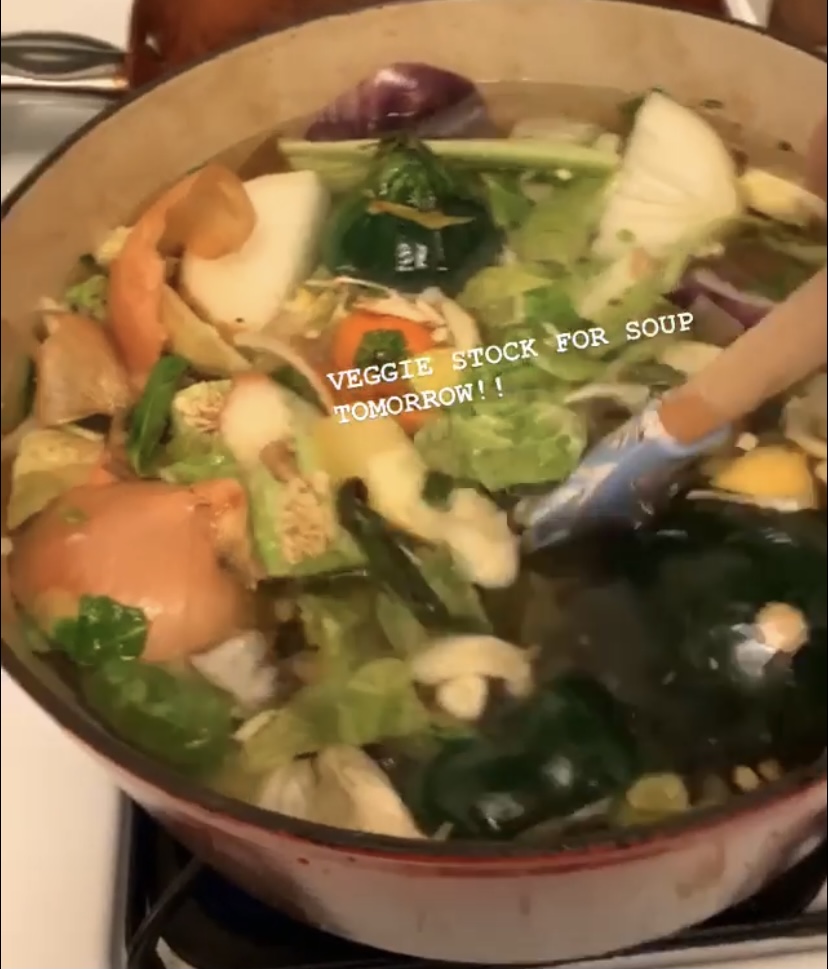
Hannah Hendrix, Veggie Stock, 2020. Photo: Hannah Hendrix. 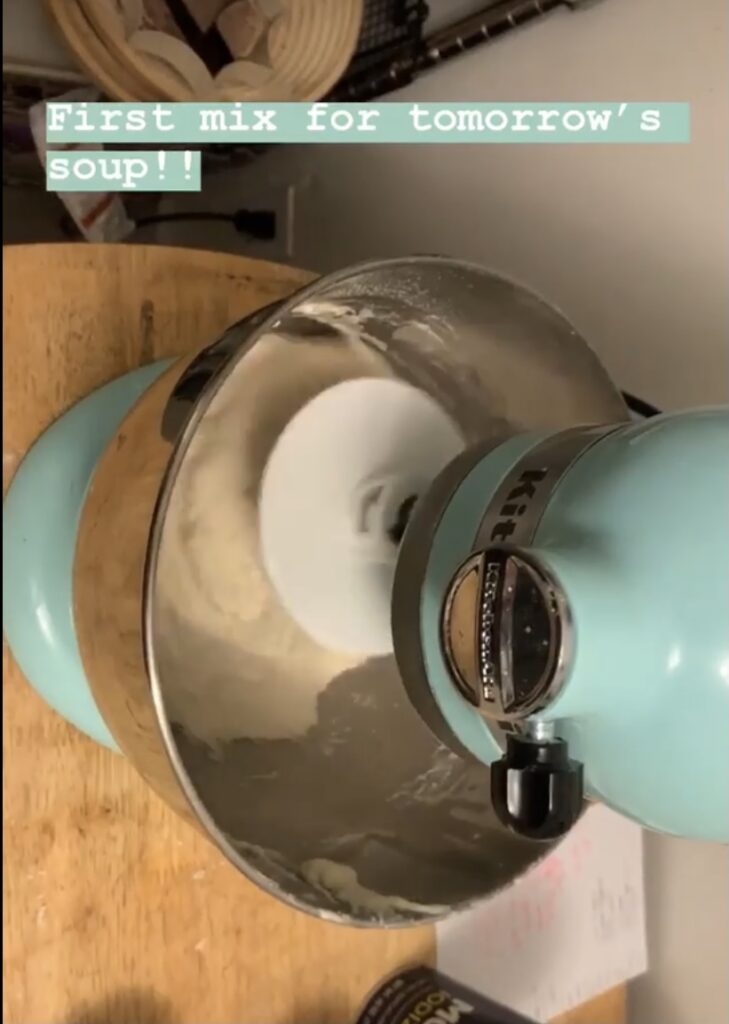
Hannah Hendrix, Bread Mix, 2020. Photo: Hannah Hendrix. 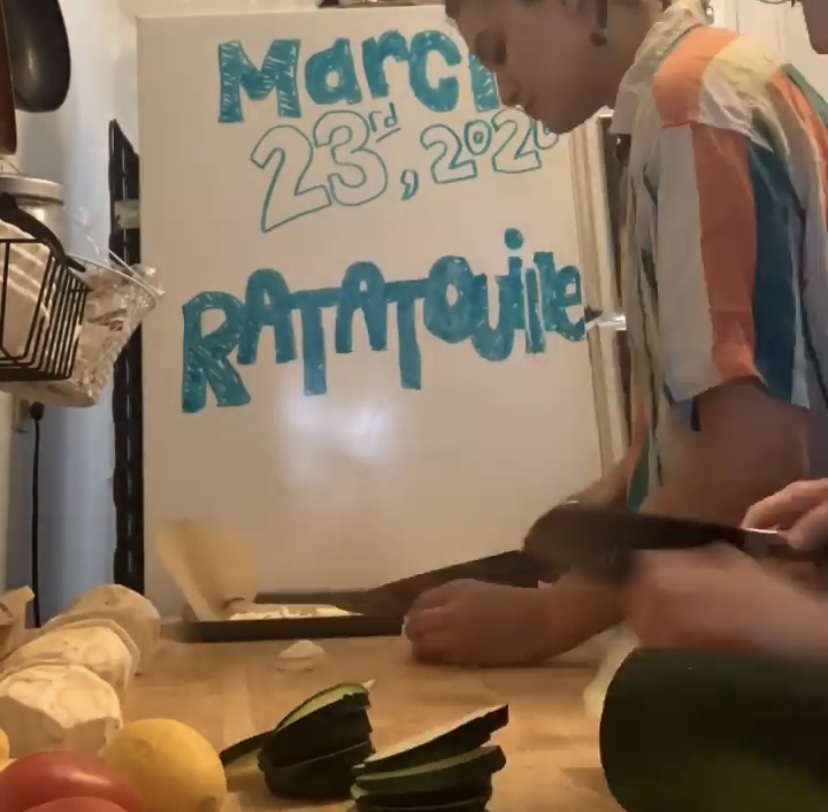
Hannah Hendrix, Cooking Ratatouille. Photo: Hannah Hendrix. 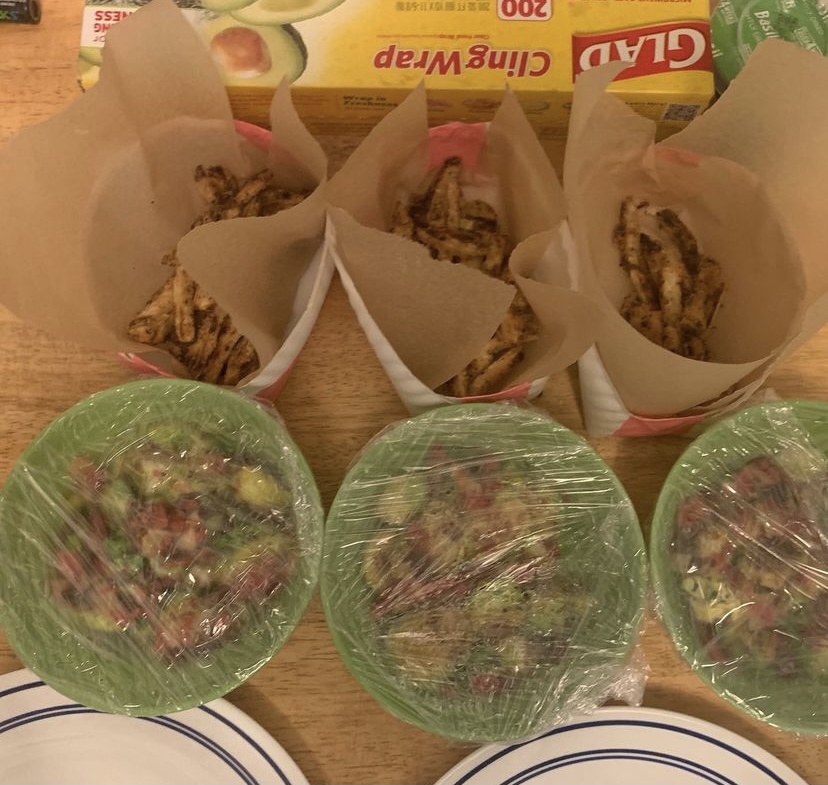
Hannah Hendrix, Serving I, 2020. Photo: Hannah Hendrix. 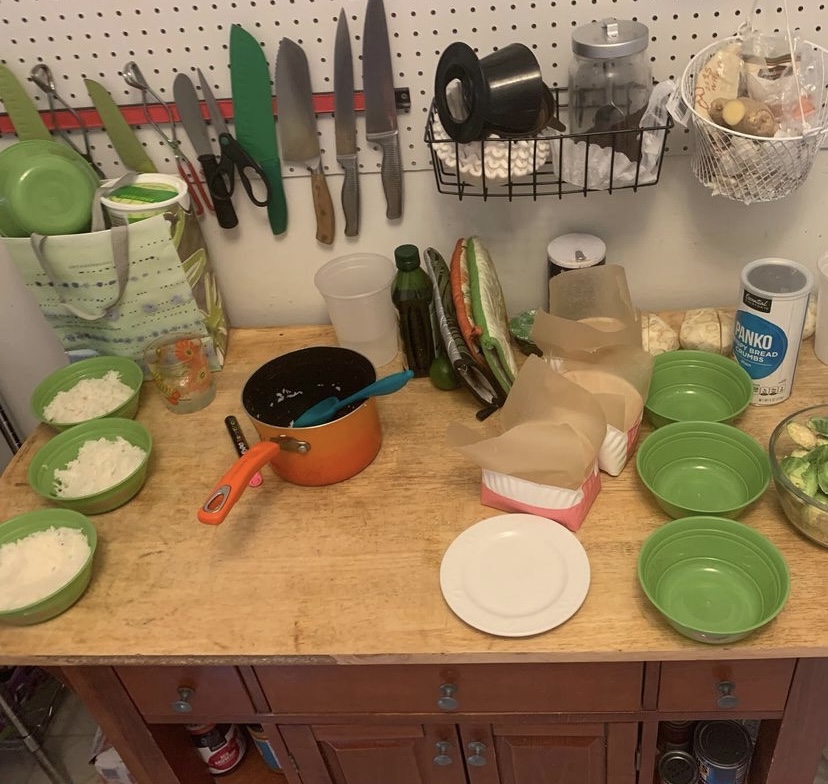
Hannah Hendrix, Serving II, 2020. Photo: Hannah Hendrix.
Once we made all the food, we realized we needed something to serve the food on. Though I was still attending art school online, I had just found out that my senior thesis show would not be happening—at all, like, not even a little bit. My plan for my senior thesis show had been to essentially install a completely stocked kitchen in the gallery, that was as fully functioning as I could get it to be. I had been collecting sets of plates and bowls from Goodwill for months, for this installation that was no longer happening, so we used them for the free meals and DIY-ed the rest of the servingware.
Sometimes I think about all those plates, dispersed among random homes in the Twin Cities, still connecting all of us, and it makes me smile.
During my time in college, I worked as a baker at a few different spots around the Twin Cities and started developing some real baking skills. I started at Augustine’s in late 2017 and early 2018, worked on and off at the Happy Gnome from 2018 to 2020, and then at BreadLab for the six months preceding the pandemic.
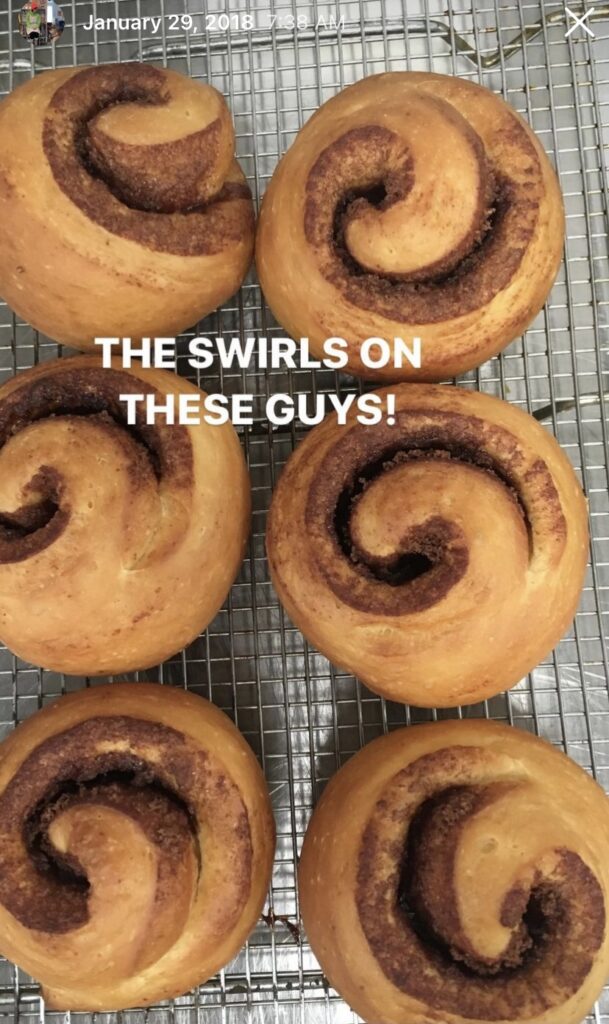
Hannah Hendrix, Cinnamon Rolls, 2018. Photo: Hannah Hendrix. 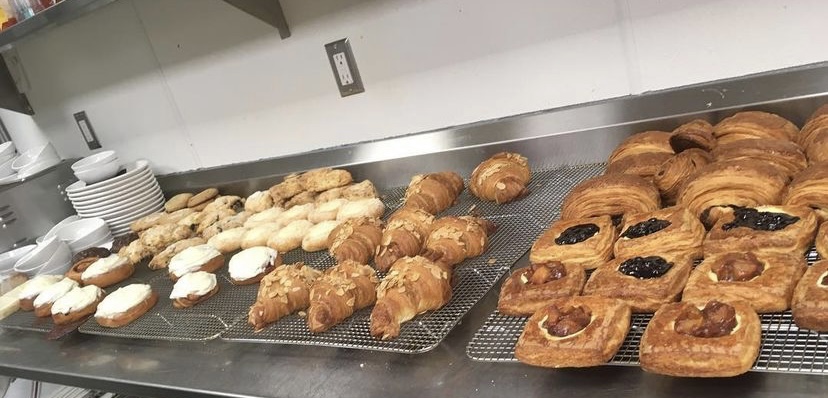
Hannah Hendrix, Augustine’s Bake, 2018. Photo: Hannah Hendrix. 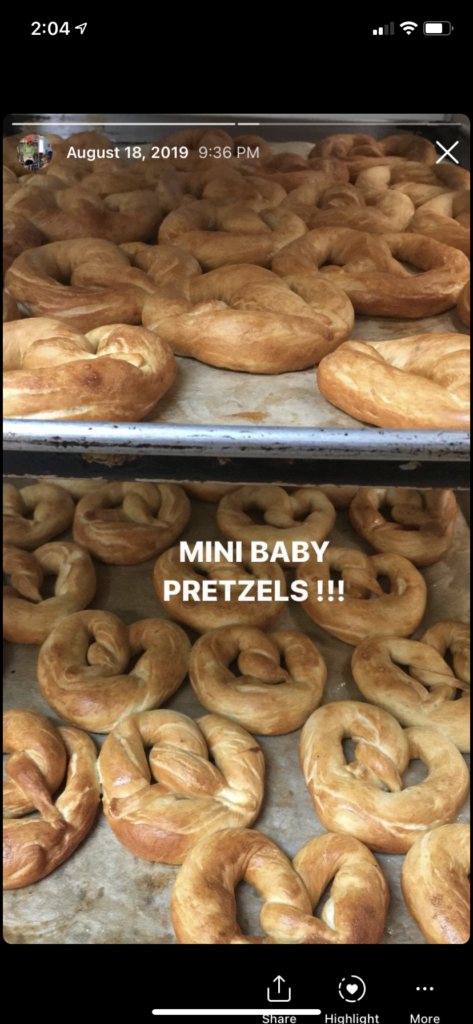
Hannah Hendrix, Gnome Pretzels, 2019. Photo: Hannah Hendrix. 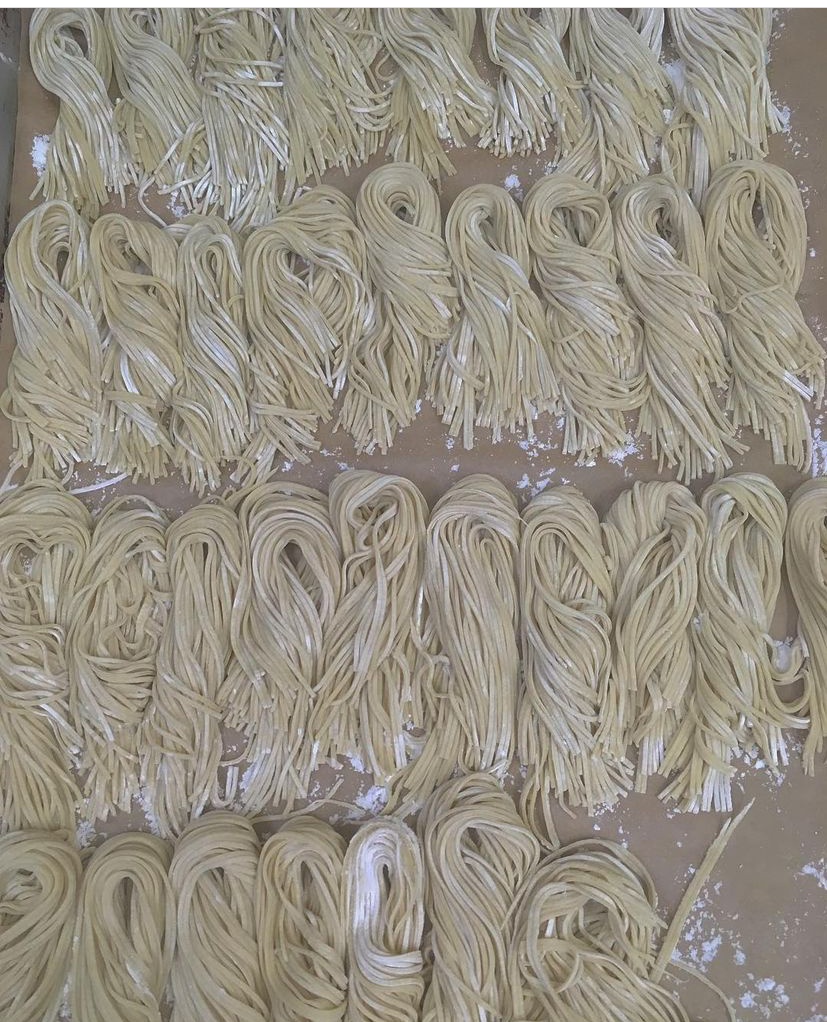
Hannah Hendrix, Gnome Ramen, 2019. Photo: Hannah Hendrix. 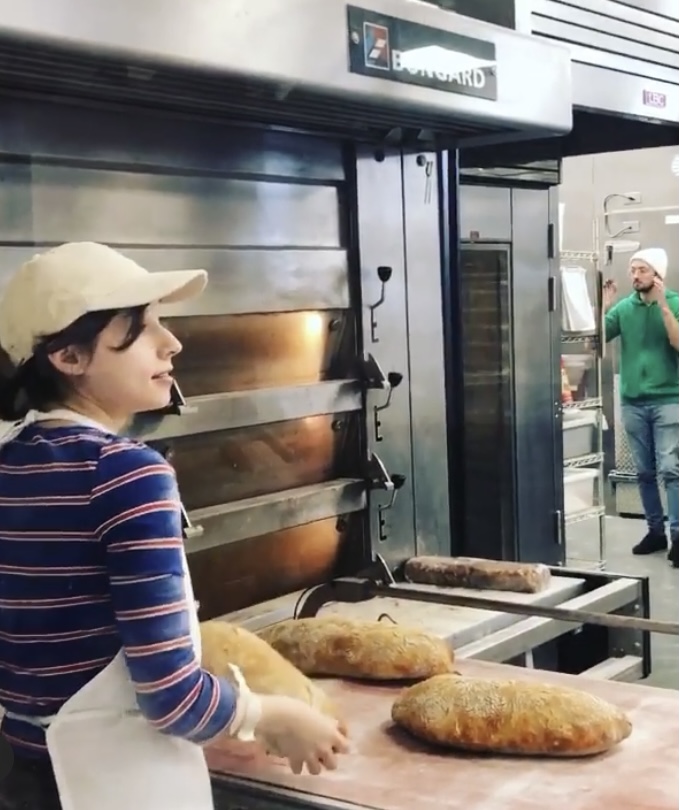
Hannah Hendrix, Bread Lab Portrait, 2020. Photo: Hannah Hendrix.
In these positions, I learned how to make other people’s recipes really well, and with all of the baking skills I was developing, I had a lot of ideas for untested flavor combinations and techniques, and wanted to start experimenting with my own recipes. I started thinking about how to create a balanced and engaging menu, and what baked goods could get people really excited.
In July 2020, as the pre-vaccine pandemic raged on, I was still left with no safe job prospects in sight. I became a registered cottage food producer, which meant I could make certain shelf-stable food items in my apartment and sell them legally. I started thinking about how I would operate a business that aligned with my needs and values, thinking of a name, and assembling a menu. My incredible partner, Malakai, agreed to lend a hand when I got over my head. On August 27, 2020, Flour Power Delivery began.
Before I started service, it was crucial to me to articulate, and make known, the values that Flour Power Delivery were founded on and that guided every decision:

Hannah Hendrix, Values I, 2020. Photo: Hannah Hendrix. 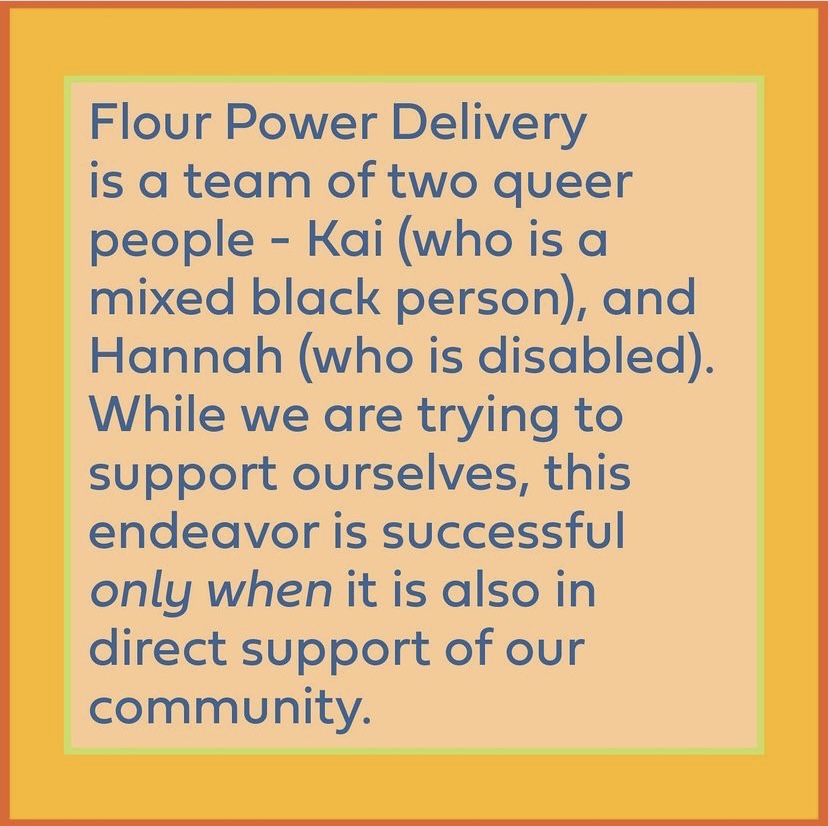
Hannah Hendrix, Values II, 2020. Photo: Hannah Hendrix. 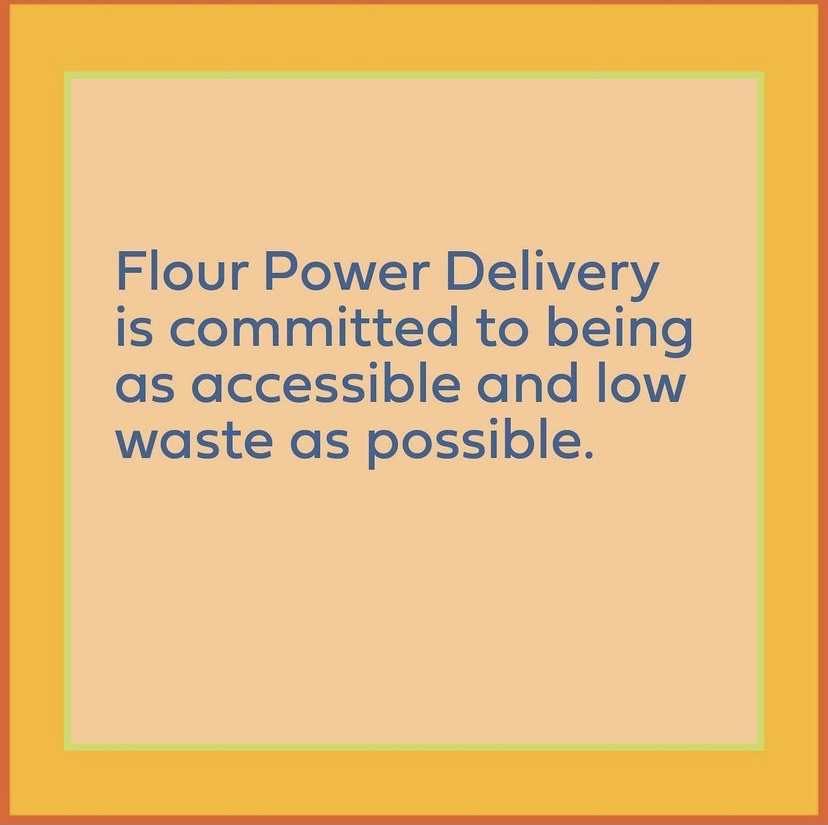
Hannah Hendrix, Values III, 2020. Photo: Hannah Hendrix. 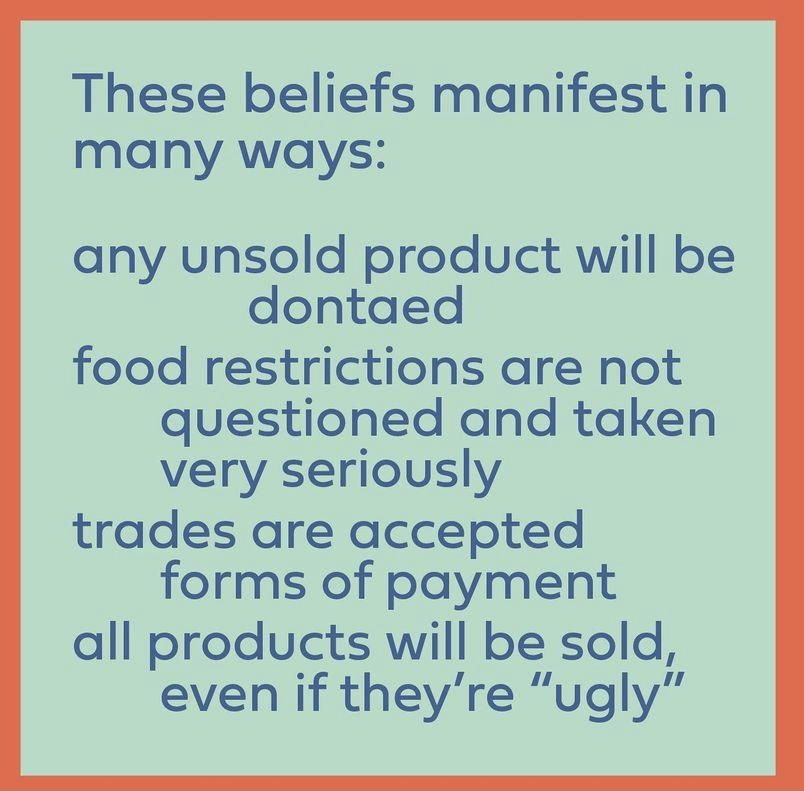
Hannah Hendrix, Values IV, 2020. Photo: Hannah Hendrix. 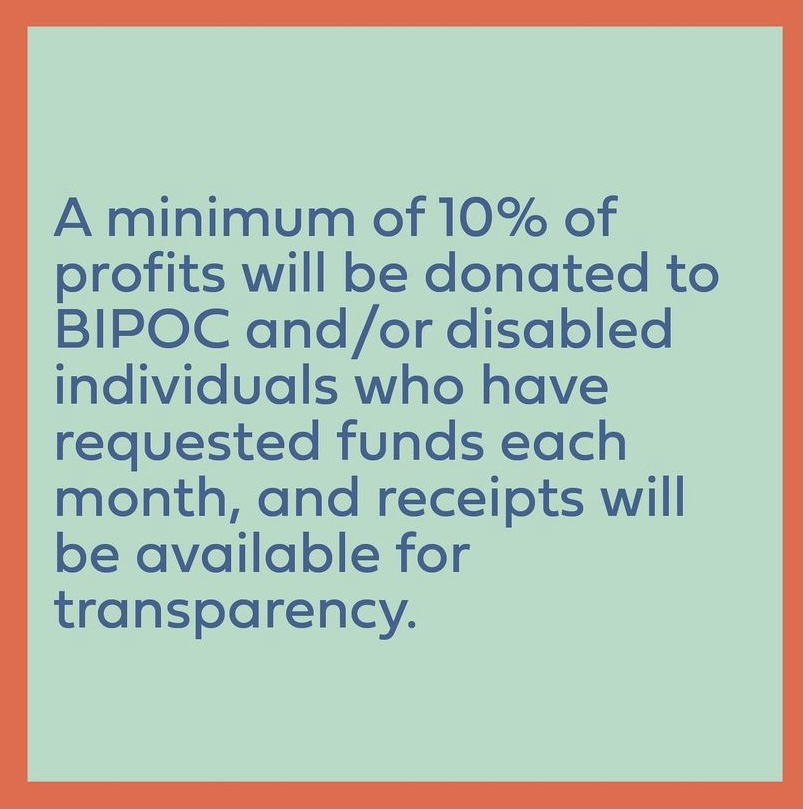
Hannah Hendrix, Values V, 2020. Photo: Hannah Hendrix. 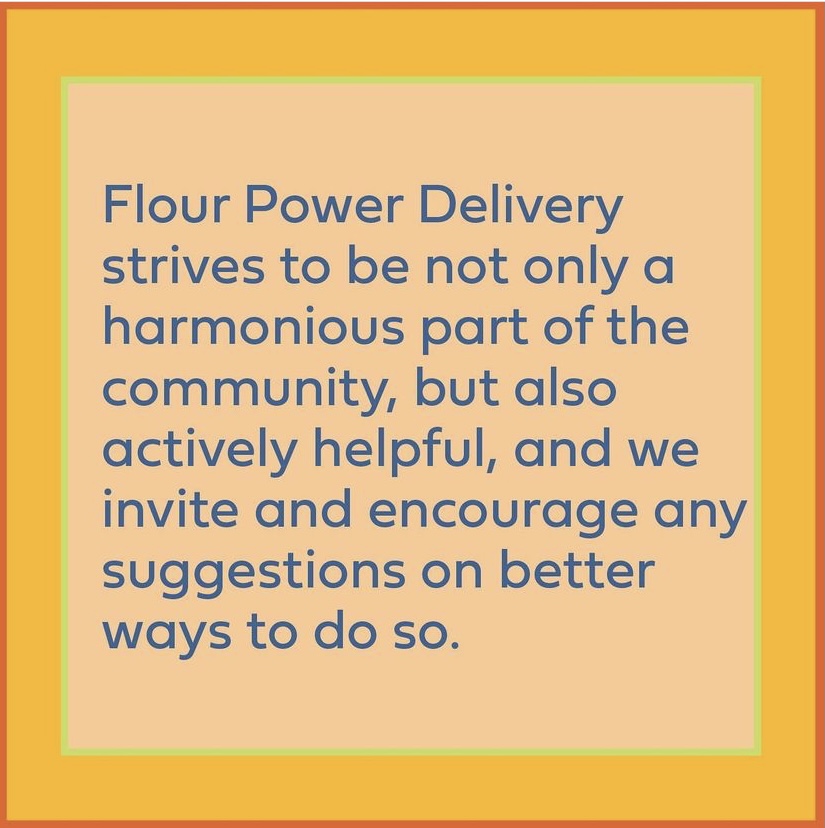
Hannah Hendrix, Values VI, 2020. Photo: Hannah Hendrix.
I developed my initial menu, which was a combination of recipes made from scratch, like soft pretzels, gourmet “bop” tarts, and feta pesto kolache.
I kept adding/removing flavors and recipes according to what people were really enjoying, what I enjoyed making, and any new ideas that were exciting to me.
In September 2020, frog bread started to blow up on Twitter. I thought I’d try my hand at it.
Turns out, making animals out of bread is something I excel at and LOVE to do. I put animal bread on the menu, and people could request any kind of animal in loaf form. Some of my favorites were the crested gecko, octopus, capybara, and my all-time fave, the alligator.
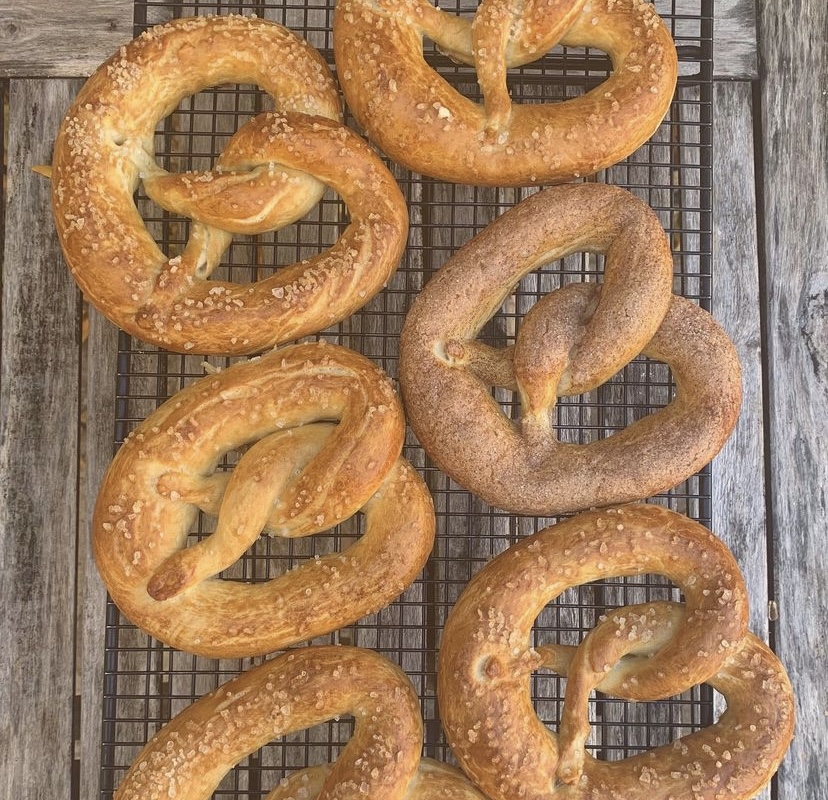
Hannah Hendrix, Flour Power Delivery Pretzels, 2020. Photo: Hannah Hendrix. 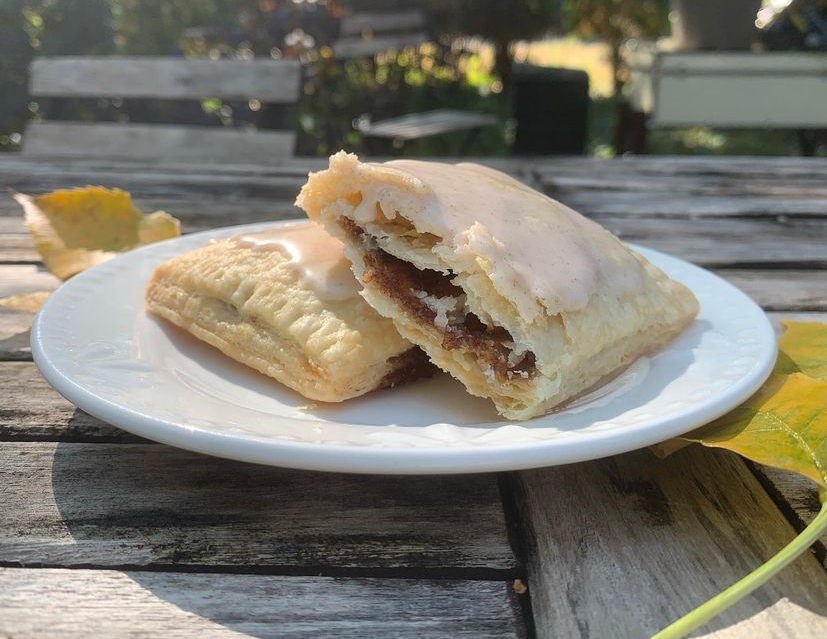
Hannah Hendrix, Bop Tarts, 2020. Photo: Hannah Hendrix. 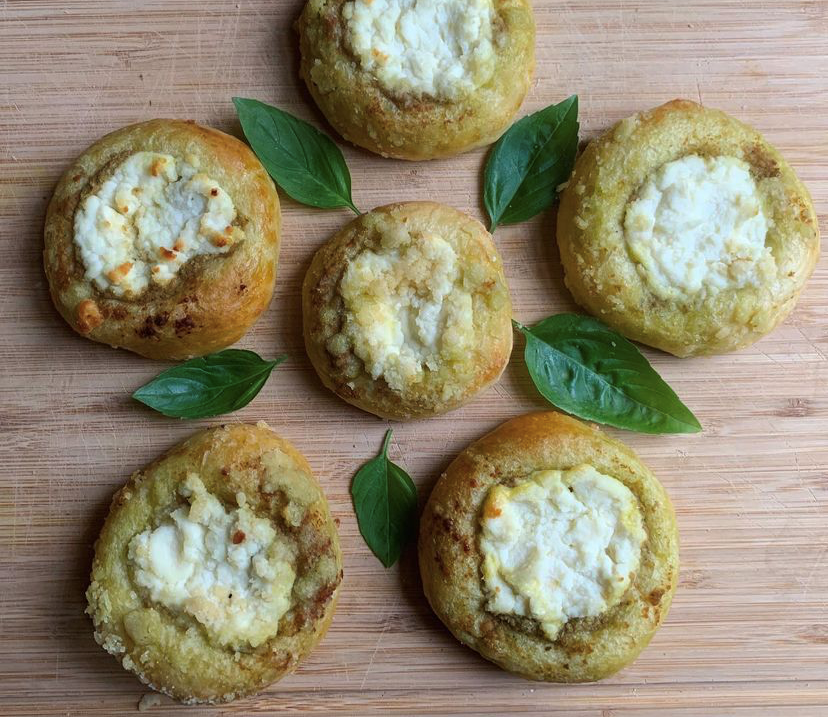
Hannah Hendrix, Feta Pesto Kolache, 2020. Photo: Hannah Hendrix. 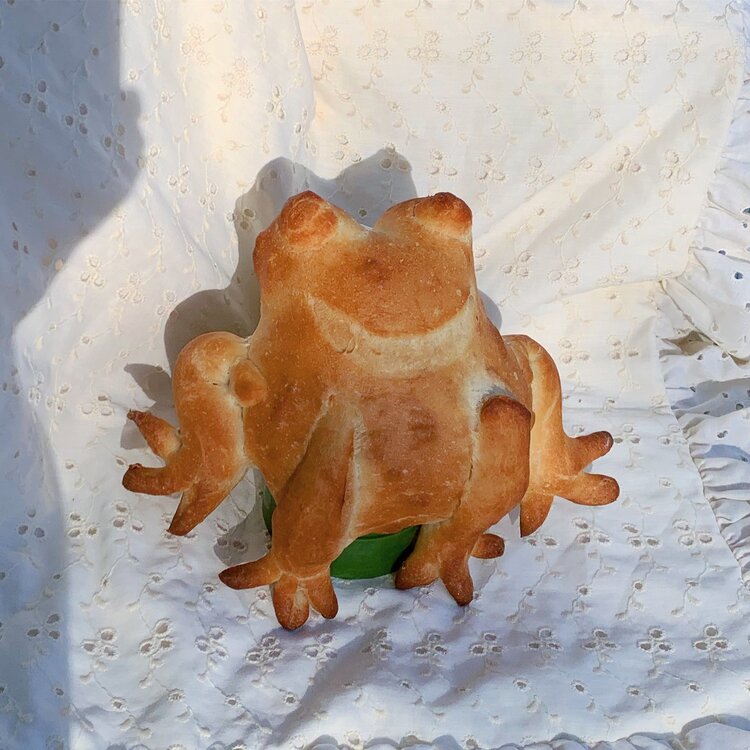
Hannah Hendrix, Frog Bread, 2020. Photo: Hannah Hendrix. 
Hannah Hendrix, Gecko, 2020. Photo: Hannah Hendrix. 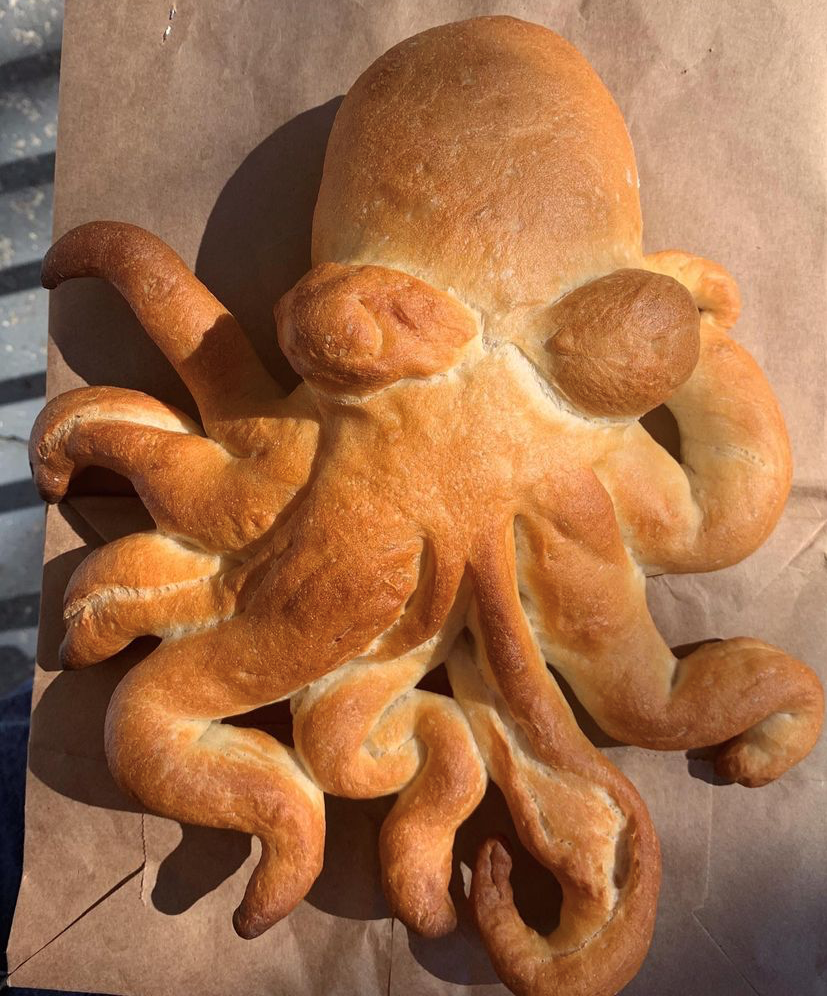
Hannah Hendrix, Octopus, 2020 . Photo: Hannah Hendrix. 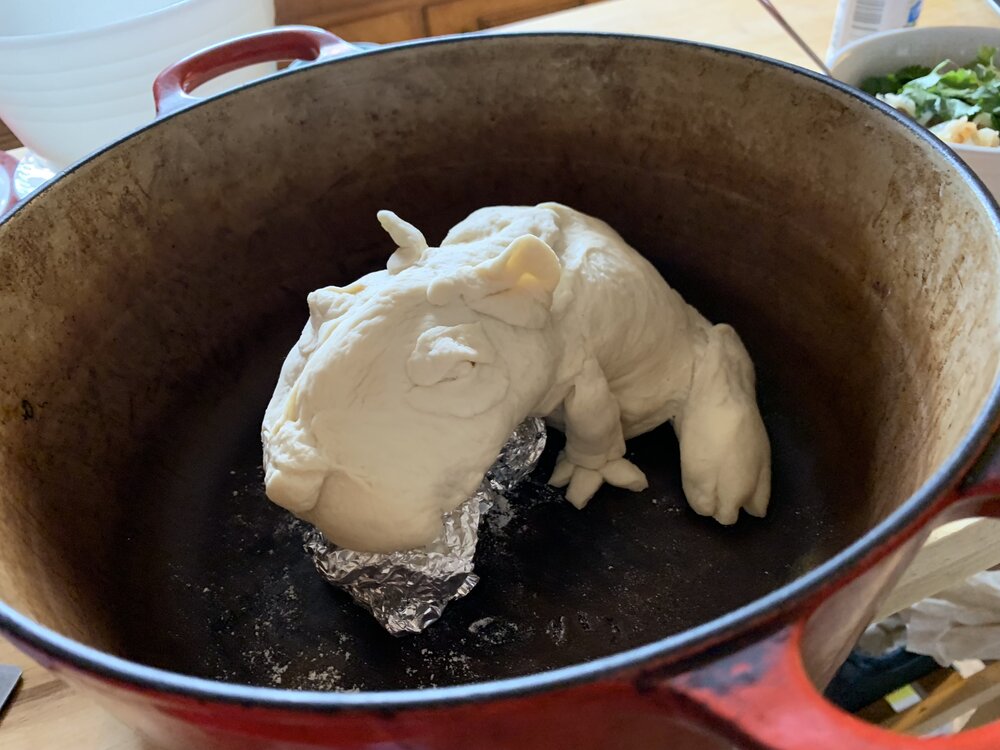
Hannah Hendrix, Capybara, 2020. Photo: Hannah Hendrix. 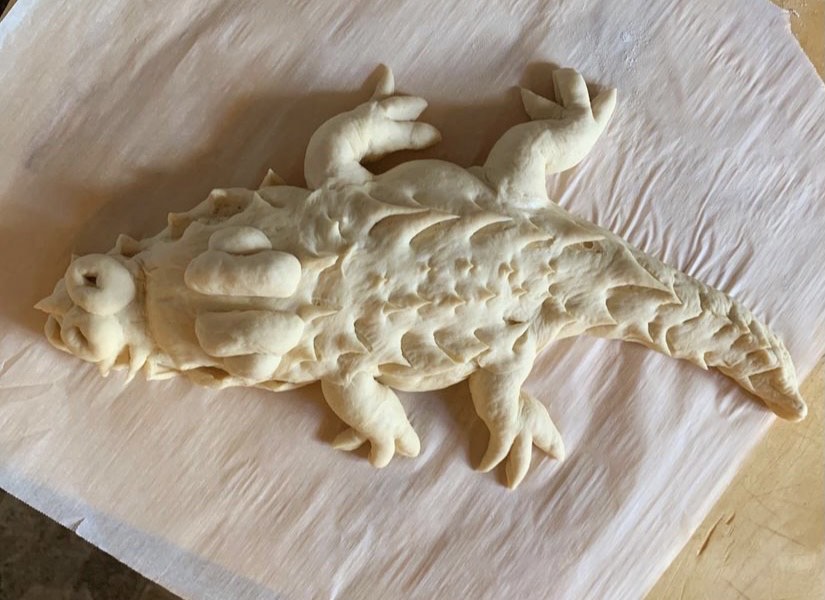
Hannah Hendrix, Prebake Alligator II, 2021. Photo: Hannah Hendrix. 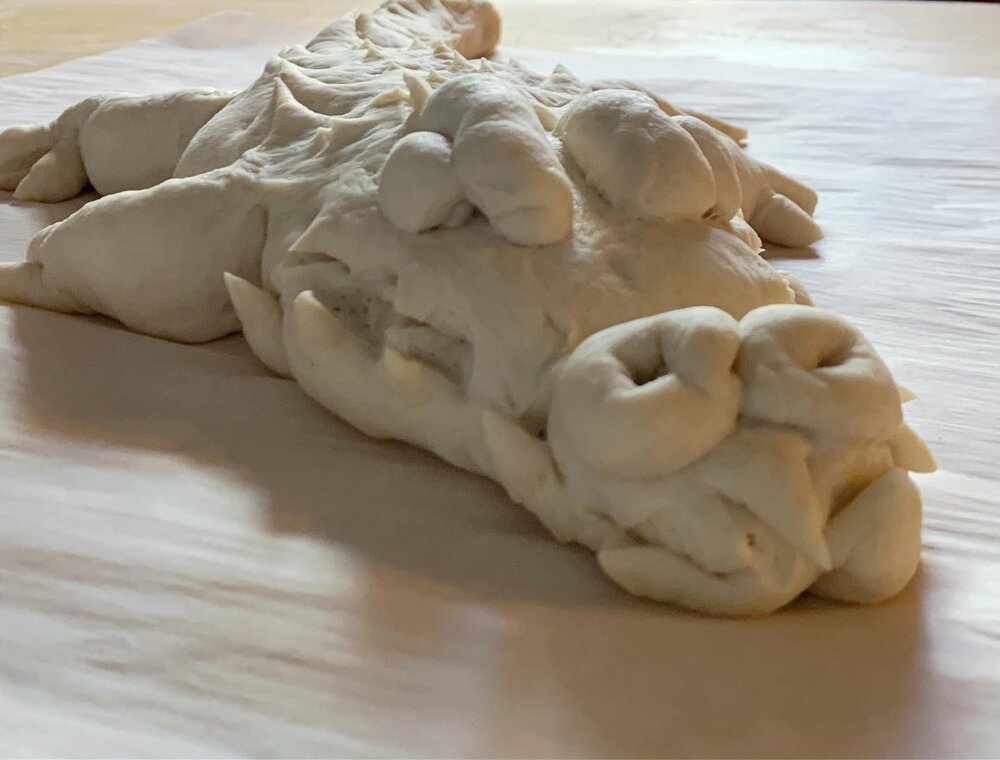
Hannah Hendrix, Prebake Alligator I, 2021. Photo: Hannah Hendrix. 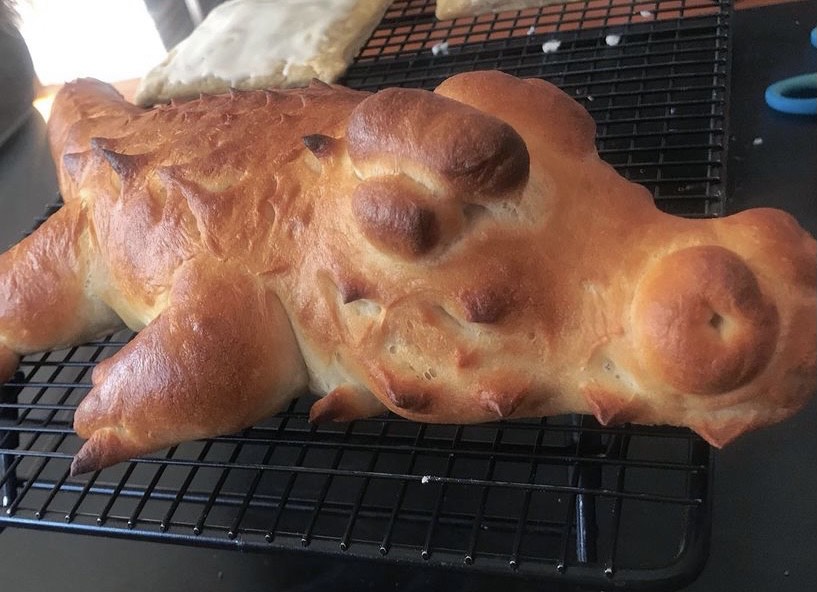
Hannah Hendrix, Alligator, 2021. Photo: Hannah Hendrix.
I participated in my first community market in December 2020 at Franconia Sculpture Park. In preparation, I made an over-the-top menu, and Malakai made the most incredible paper mache sign. Alongside our baked goods were t-shirts, printed by the People’s Library. People’s Library members also pulled some of these prints on some pieces of muslin, and for a while, you could choose to have your order wrapped in homemade beeswax wraps.
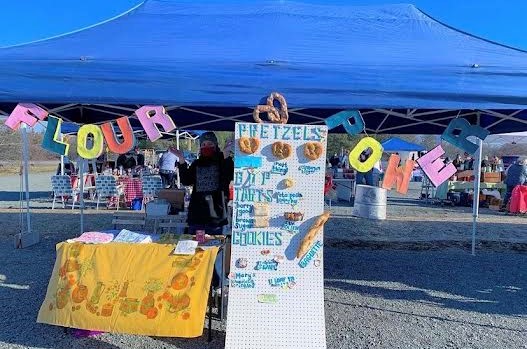
Hannah Hendrix, Franconia, 2020. Photo: Hannah Hendrix. 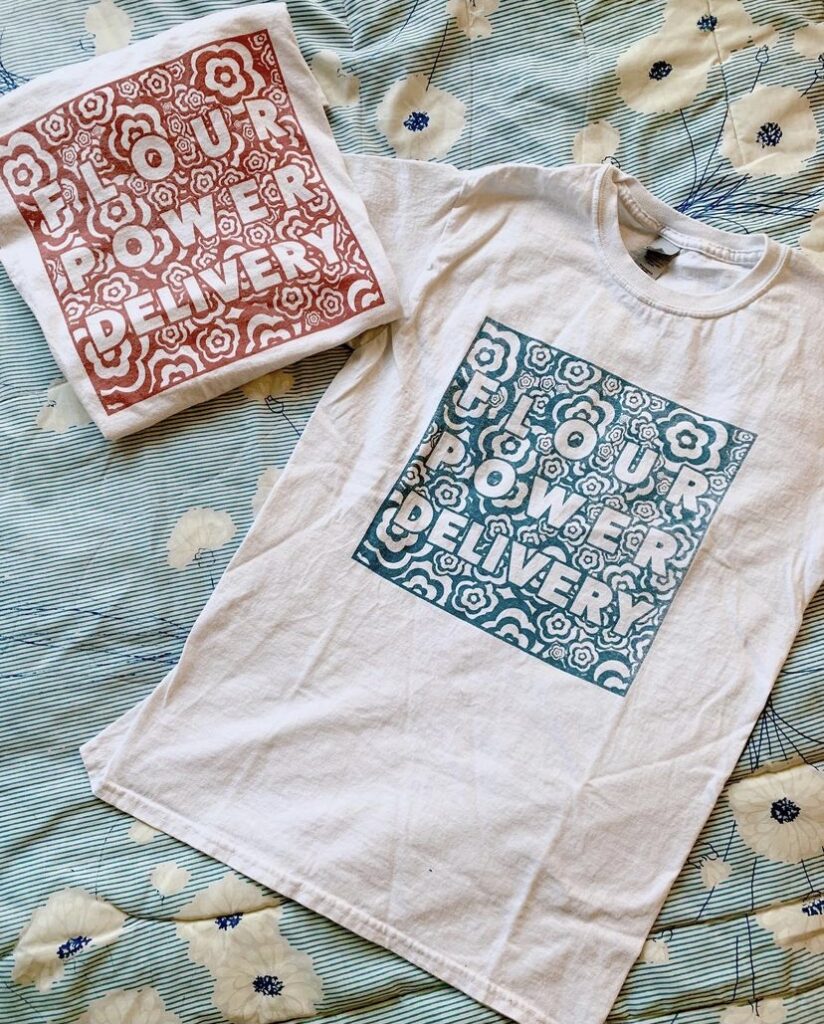
Hannah Hendrix, Tee Shirts, 2021. Photo: Hannah Hendrix. 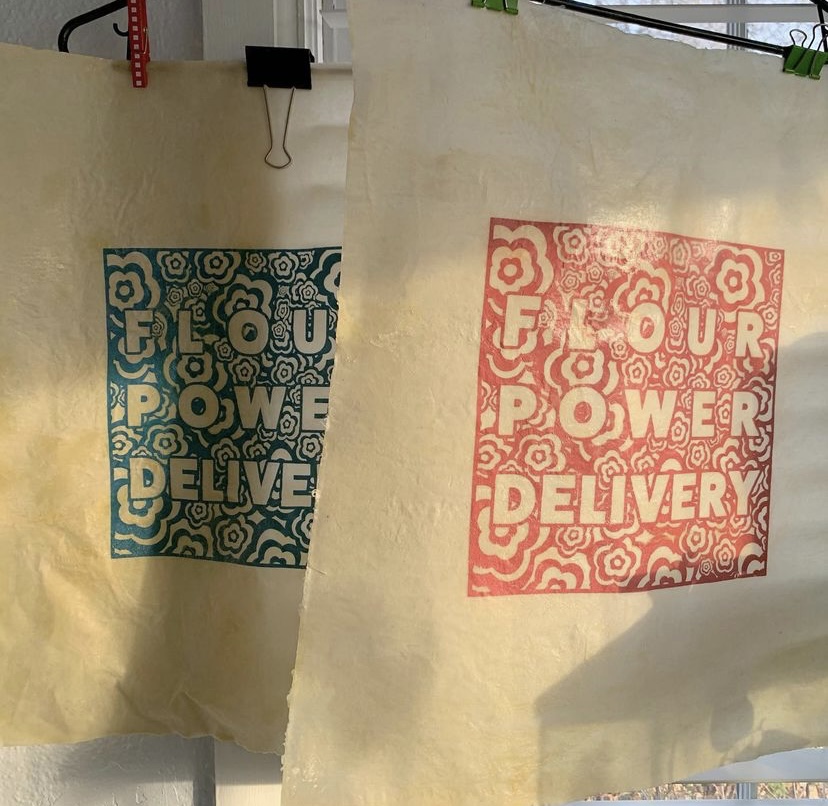
Hannah Hendrix, Beeswax I, 2021. Photo: Hannah Hendrix. 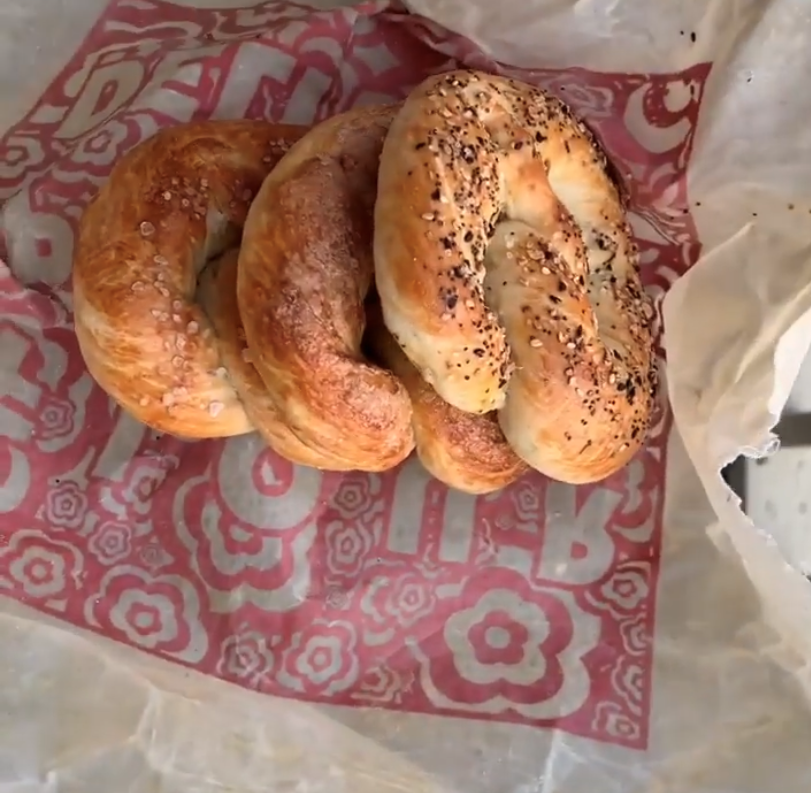
Hannah Hendrix, Beeswax II, 2020. Photo: Hannah Hendrix.
I sold everything on a sliding scale and delivered for free five days a week, anywhere in the Twin Cities. I learned that being in control of the physical conditions of my job could quite literally change my entire life. I sat while I baked, and suddenly I had energy after I was done with work. I took hour-long bathroom breaks, and didn’t have to go through the embarrassing ordeal of having to explain myself. I could say no to tasks that would add too much to my plate, and I could get things done the way I wanted to.
Before the pandemic forced things to slow down, I couldn’t perceive the toll that “just pushing through” and “trying not to be a bother” in the workplace was taking on my body. To be able to sit while at work should not be a radical ask, especially in the world of “reasonable accommodations.” Being my own boss meant I could start listening to the very real, dire needs of my body over a manager’s perception of professionalism. As I heard Imani Barbarin once put it, “I won’t be another disabled person making themselves more palatable.”
While trying to honor the needs of my body, I made some pretty big missteps. Some days I would only get a few hours of sleep to keep up with the number of orders. I usually wouldn’t cancel any orders even though I was incredibly overextended. I rarely took things off my menu. I wasn’t very kind to myself when I made mistakes. Even now, I still struggle to be kind with myself for not taking care of myself as well as I could have during service. Baking and delivering orders was how I paid for the things I needed, and I was worried that drawing any of those boundaries could potentially threaten my income. Still, the agency that came from controlling my home workspace and having the option to listen to my body is invaluable to me as a disabled maker.
Apart from my still-developing ability to honor my body’s needs, two of the most valuable things I gained from Flour Power Delivery were new recipes, and how to make them spot-on each time.
The first Flour Power recipe I found while on a search for a gluten-free and vegan menu item. I tried A LOT of recipes and even once I narrowed it down to a few of them, I kept getting wildly different results from the same recipe. The runner-up result was the Cinnamon Star Loaf. The Cinnamon Star Loaf is a pretty solid gluten-free recipe, if you don’t let it overproof or underproof at all, but is super tricky to get right when it’s completely vegan. While a delicious recipe, it still wasn’t checking all my boxes.
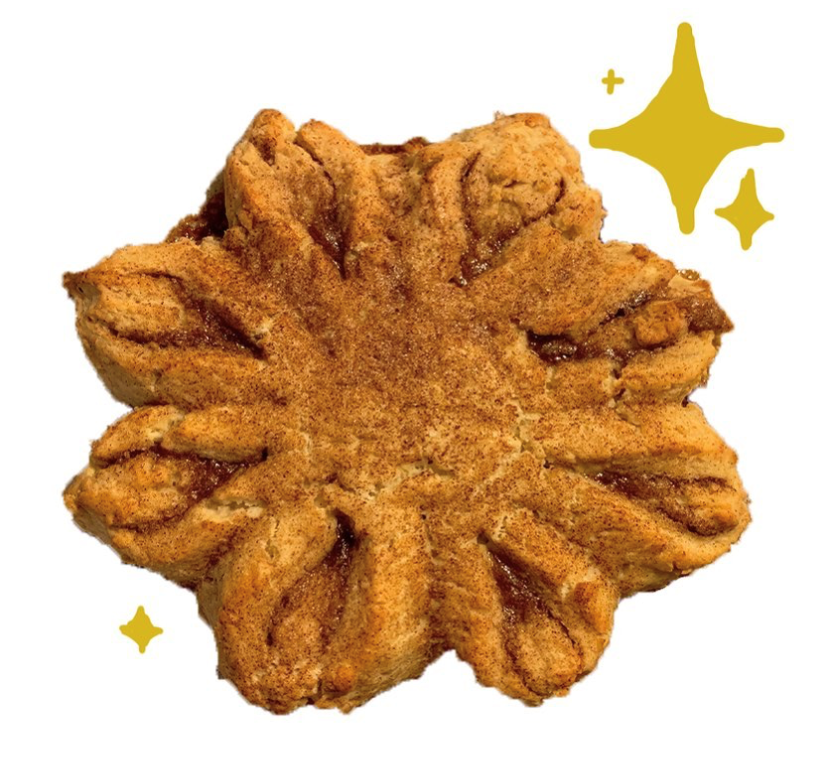
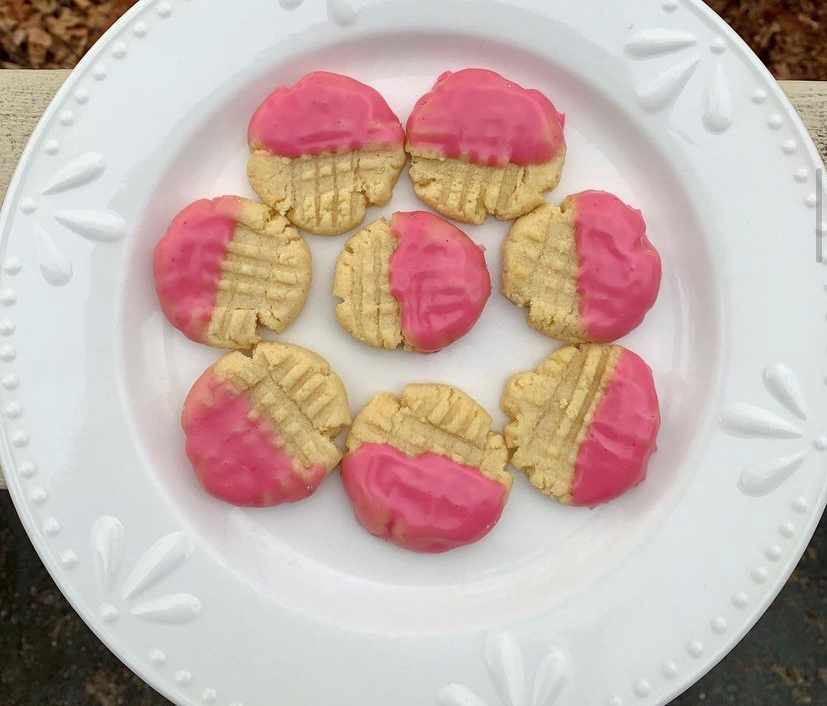
I then found the ultimate GF and vegan recipe: Almond Flour Shortbread Cookie with Earth Balance butter. These cookies are absolutely exquisite every single time I make them, and take me 20 minutes total. Not only are these cookies delicious, the recipe has only five ingredients. You just toss everything in, mix, and bake! I usually dip these cookies in a raspberry glaze. I buy freeze-dried raspberries for the glaze, which taste great and are shelf-stable, so you can have it for your next cookie-making endeavor. I always use a fine mesh strainer.
Tips for the Almond Flour Shortbread Cookie:
- The few times I’ve used real butter for these cookies, they truly just did not taste as good.
- If you’re using an electric or stand mixer, there’s a real risk of overmixing the dough. When this happens, the oil in the plant-based butter can separate in a way I still do not understand. I’ve yet to find a way to salvage the dough if it gets to that point. If you are able, mix by hand!
- Almond flour can be pretty expensive. The cheapest I have been able to find it in my many price comparison trips is the Good & Gather brand at Target.
- Remember to check the powdered sugar you’re buying doesn’t have gluten, because sometimes they do sneak some in there.
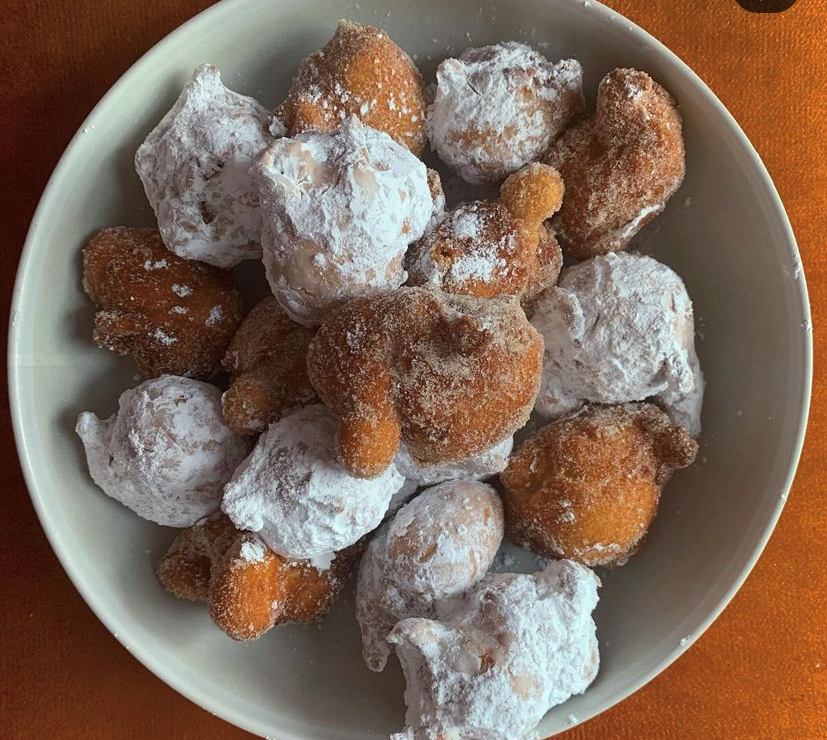
My recipe for the best vegan donuts is based on a recipe for oly bollen from my grandma’s self-published 1989 recipe book.
Oly bollen are pretty much Dutch donut holes with some fruit inside. My grandma’s oly bollen recipe isn’t vegan and calls for raisins, and is one of the few things I like to keep close to my chest. But I am more than happy to share my adapted version which is as follows:
For about 30 vegan oly bollen:
Ingredients:
- 1 ½ cup of all purpose flour
- ½ tsp salt
- ½ cup granulated sugar
- ¾ cup milk alternative of your choice (I usually use almond)
- 1 ½ tsp baking powder
- 1 ½ honeycrisp apple
- You’ll also need vegetable or canola oil for frying your donuts!
Special Tools (that you can do without if necessary!)
- Kitchen thermometer
- Cookie scoop*
*Instead of a cookie scoop, you can use two spoons, one to put batter in the pan, one to take out finished oly bollen. I really dislike being sticky in the kitchen, and find that using a cookie scoop makes the process WAY cleaner.
- If using a two-quart saucepan to fry like me, fill with about three inches of vegetable or canola oil and set to medium heat. You can usually find a pan’s capacity written on the bottom of your pan. If you use a different size pan, just keep in mind you want enough oil for the oly bollen to fry in a ball shape and not touch the bottom of the pan, but not so much that your oil is super close to the top edge of the pan. The more oil you use, the longer it takes to heat, and the more likely you are to get a lil oil kickback.
- Peel and dice (or finely chop) apples, and put them aside.
- Mix all of your dry ingredients—flour, salt, baking powder and sugar—together first. Don’t underdo this step! You can’t overmix these ingredients, and nothing is worse than a super salty bite of oly bollen.
- Add milk alternative to your nicely-mixed dry ingredients and mix til it’s nicely combined. I usually use unsweetened almond milk.
- Add your diced apples with your batter. Your batter should be pretty thick, much thicker than pancake batter, almost like yogurt. It should plop like a dollop. Don’t be afraid to add a LITTLE flour or “milk” to get it closer to this consistency.
- The ideal oil temp for oly bollen is about 270 degrees. Dry flour should immediately sizzle if you throw it in a pinch.
- Before you fry, which is a dangerous task, check in with your body. Drink some water, sit down, or dance it out.
- Fry until they’re golden brown, and be sure to rotate donuts about once a minute, for an even fry.
- Toss some in cinnamon sugar while they’re still a little hot to get the sugar to stick. Wait for the rest to cool and toss in powdered sugar.
Some frying tips:
- Don’t overcrowd your pan. If there’s too much room-temperature stuff going in, it can quickly lower the oil temp. Fried things also tend to get soggy if they’re overcrowded.
- Putting wet batter in hot oil means it will spit at you, so be ready and aware! If it’s like seriously spitting at you, though, it probably means your oil temperature is closer to 350-380.
Finally, I want to end with one more recipe:
Caring for You and Your Neighbors in 2022
“When I feel completely lost, I can focus each day on being kind, being generous, and being honest. I light candles for all I cannot carry, and then move into the present moment with only my love.”
adrienne maree brown, “The Darwin Variant, and/or Love of the Fittest”
Ingredients:
- KN95* (Gopuff, the delivery app, has a constant two-for-one sale on 10 packs of KN95s.)
OR
- N95 mask** (A box of 30 can be purchased at Home Depot for $24.97 or 83 cents/mask. Menards has more selection and seems to sell out less often, but are a bit more expensive. Most packs are about $1 per mask. Almost all of Lowe’s N95 options have valves.***)
- 1 full vaccine round, with boosters (if that is possible and accessible for you.)
*The most important part of this ingredient is that it adequately seals around your nose and mouth. Try to use these instead of surgical masks, and especially instead of cloth masks.
**If you receive SSI and want some high-quality masks for you and your family, fill out this form.***N95 masks with valves do not protect those around you, only you, so buying these will pretty much ruin this recipe.
Steps (there’s always more, and it’s always changing):
- When you’re indoors, not at home, wear a mask (if you can.) Wear your mask like it’s actively stopping you from getting COVID, like that very second, because you never know when it is.
- Whenever possible, stay home when you’re not feeling well. Whenever, wherever possible, please stay home. If you can, do curbside pickup. Maybe you could start a curbside pickup carpool, so your friends/family/neighbors without cars can avoid stores. Love playing games with people? Check out the Discord Games Lab.
- Call your local officials, and tell them to start helping us out. I call Tim Walz’s office, 651-201-3400, pretty regularly and ask for a mask mandate. But maybe you wanna say “Hey Tim, please stop letting thousands of people gather for sports games,” or “Tim, please use our historic $7.7 billion budget surplus to send high-quality masks and at home tests to our community.”
- Notice: What do you need? Take time to rest, and drink water.
- Notice: What do you have? What can you offer? Is it time, money, or skills? Do you have access to free laundry and a car? Maybe look into The Peoples Laundry MPLS. Are you at low risk for COVID, and have a couple of spare hours to do some very light labor? DuNord Community Market and CANMN are great spots to volunteer. What could you use some help with, and who can you ask?
- Notice: Who’s absent from the spaces you’re in? Understand that inaccessibility is a choice. Inaccessibility does not happen by accident—it is an intentional action that is part of our world. How are you contributing to these absences? How can you make spaces more accessible?